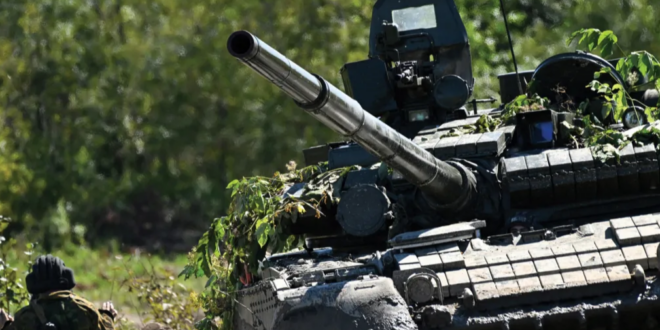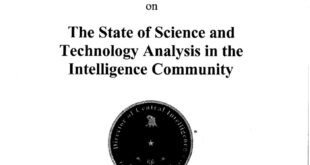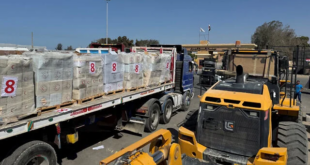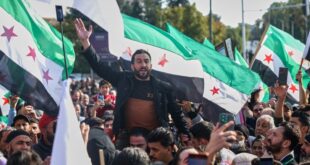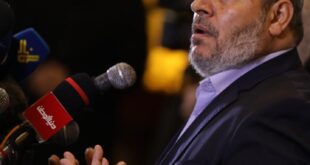The Russian military has undergone a rapid and comprehensive transformation since its full-scale invasion of Ukraine in February 2022 by optimizing itself to fight a positional war. The Russian military has made a virtue of necessity in that optimization, but its degraded force is now likely incapable of effective maneuver warfare at scale. The Russian military has revised the structure, equipment, and tactics of its units at every echelon from group of forces to company to enable itself to fight a positional war with low-quality personnel, insufficient stores of armor and advanced munitions, and poor command and control. The current Russian military can only conduct positional offensive operations to support its theory of victory — outlasting Western support for Ukraine and sustaining grinding territorial advances that Ukraine cannot reverse — and cannot currently conduct significant operational maneuver.
The Russian military cannot and will not simply recreate its pre-2022 force structure and capabilities following the negotiated end or suspension of major combat operations in Ukraine. Western efforts to forecast the medium-term Russian military threat to NATO will be dangerously flawed if they are not based on a thorough understanding of Russian military culture; the Russian military’s current capabilities in Ukraine (rather than pre-2022 assessments); and the structural factors and variables that will shape the Russian military’s lessons learned efforts and reconstitution processes.
The Russian military will very likely attempt to reconstitute a force capable of some form of mechanized maneuver. Institutional dishonesty and cultural constraints will impede — but not completely invalidate — Russian efforts to design and implement an effective reconstitution plan. Russian military reconstitution efforts through 2030 will combine elements of the Russian military’s pre-2022 force structure, its current adaptations for positional warfare, and aspirational precision strike capabilities into a hybrid force, and will not pursue any one of these pathways to the exclusion of the others. Combat experience in Ukraine will shape the next generation of Russian officers, and the Russian military will integrate learning from Ukraine to some degree despite institutional constraints on honestly discussing lessons learned. A partially or inefficiently reconstituted Russian military can still threaten NATO and US interests, however. Western forecasts must not assume that Russian forces will not be able to threaten NATO in the short-term because they currently cannot conduct operational maneuver against the highly effective Ukrainian Armed Forces (UAF) in Ukraine. NATO must update both its pre-2022 assessments of Russian capabilities and its preparations to deter or defeat future Russian aggression against Europe.
Russian Conventional Military Capabilities as of 2025
The Russian military’s initial performance in Ukraine was a deviation from the way the Russians intended to fight, rather than a direct manifestation of an inherently flawed Russian way of war. The Russian, and before it the Soviet, way of war centers on deliberately offsetting a lower quality of individual personnel with relative tactical inflexibility to enable effective operational-level campaigns designed with the tactical limitations of the force in mind. Russian units memorize and relentlessly drill a playbook of battle orders (боевой приказ, boyevoy prikaz) from which tactical officers select a chosen plan with minimal alterations to meet the situation at hand, rather than using the formal Western approach of creating a bespoke plan with staff support for each situation. This system enables senior commanders to achieve operational complexity and effectiveness through the aggregate effects of numerous individually simplistic but rapidly executable and predictable tactical actions. The modern Russian military continues to implement the Soviet optimization of centralizing decision-making authority at the army echelon and above to make the most of a limited pool of qualified officers in large-scale conventional war.
This Russian and Soviet way of war can be highly effective when well executed, as in the closing years of WWII, and the Russian military continues to draw on the Soviet experience in WWII as an aspirational model of effective conventional maneuver warfare. The deeply ingrained popular idea of the “Russian steamroller” and the idea that the Soviet Union — and by extension modern Russia — wins wars by simply outlasting its opponents is inaccurate and directly shapes flawed perceptions of contemporary Russian capabilities. Three primary factors enabled the Red Army to leverage its mass effectively to achieve operational and strategic effectiveness, especially at the end of World War II.
First, the Red Army developed excellent operational art over time and concentrated on effectiveness at the operational level over skill at the tactical level of war.
Second, the Red Army was not simply a large but low-quality force by the end of the war — the Soviets
fielded high-quality breakthrough and exploitation formations in addition to large numbers of line rifle divisions.
Third, the Soviet Union fully mobilized a truly massive base of manpower and material to fight an existential total war (unlike the mobilization in support of the Russian invasion of Ukraine, as much as the Kremlin tries to portray its unprovoked invasion of Ukraine as an existential war) and received substantial international support through the Lend-Lease program.The Russian military is not effectively emulating this Soviet model in Ukraine, however. The already relatively low quality of Russian personnel and officers has declined precipitously; Russian orders processes have broken down; and Russian operational art is a far cry from Russian pre-war intent and from the Soviet practice on which the Russian military ostensibly models itself in conventional war. The Russian military’s aspirational views of modern war have directly shaped the adaptations Russian commanders have made in order to fight a positional war in Ukraine with degraded capabilities, however.
The Russian military has adapted its strategic and operational command structures to fight a positional war in Ukraine and is cementing its wartime adaptations into planned practice in a future war. Putin appointed Chief of the General Staff Army General Valery Gerasimov as theater commander on January 11, 2023, a position he has held since then. Gerasimov has commanded five to seven groups of forces (equivalent to Soviet front or Western army group commands), each controlling subordinate field armies and other independent units. This current command structure is in line with the intended structure of Russian command in a large-scale war in pre-2022 doctrine, though heavily compressed through the deployment of up to seven groups of forces to a theater of operations covered in peacetime by two military districts. The Kremlin issued a directive in February 2025 formalizing the groups of forces as new General Staff Directorates and restructuring the military districts as strictly administrative structures for force generation rather than joint headquarters, codifying its de facto structure in Ukraine and returning to the historical Soviet approach to military districts and wartime front-level headquarters. The Russian military has largely transformed armies and corps into static headquarters assigned to fixed sectors of the front line since 2022, an optimization for fighting a positional war with decreased C2 capabilities. Russian divisions are likewise predominantly operating as combined arms army headquarters in microcosm — commanding their depleted organic battalions as well as attached “independent regiments” and various other detachments on fixed axes. This force structure is effective in a positional war, but Russian field armies would very likely struggle to maneuver as cohesive entities in any future period of mobile warfare without extensive reconstitution and reformation.
The Russian military has transformed itself at the battalion and company level since 2022 into a force optimized for slow offensive operations in a positional war, functionally abandoning the ability to conduct mechanized maneuver warfare and accepting a system relying on high casualties for limited gains. The Russian military abandoned the theoretically flexible but highly brittle mechanized Battalion Tactical Groups (BTGs) it used in the 2022 invasion after heavy early losses. The Russian military’s decision to invade Ukraine with over a hundred BTGs rather than mobilizing and fielding its brigades and regiments at full strength effectively locked the Russian military into a degraded force structure well into 2023 and even 2024. The Russian military successfully adapted to these limitations throughout 2023 and 2024, however, abandoning the BTG model and optimizing its tactical unit structures and tactics for a slow positional war. The Russian military’s current tactical approaches are an effective adaptation to its degraded command-and-control capabilities and the positional nature of the current war. The Russian military remains relatively flexible and iterative at the tactical level within the constraints of its degraded force structure. Russian forces have developed specialized sub-tactical unit structures and assault tactics relying on speed and dispersed movement to bypass or assault Ukrainian positions disrupted by fires or perceived to be weak points. This approach is deeply inefficient in lives and can only enable slow advances, but the Russian military appears to assess that its loss rates are sustainable and that its slow rates of advance meet its strategic requirements.
The Russian military has developed a minimally sufficient form of operational art that can enable very slow operational successes against overstretched Ukrainian defenses, but Russian offensive approaches do not translate effectively to maneuver warfare at scale and will not produce a rapid Ukrainian collapse in the short to medium term. The Russian military likely developed and disseminated an operational approach to facilitate steady advances by early 2025, modeled on the capture of Avdiivka in early 2024. Russian forces have demonstrated the ability to find and exploit tactical weak points in Ukrainian positions (most often the seams between unit boundaries or attacks during Ukrainian unit rotations), interdict Ukrainian lines of communication, and slowly envelop key settlements to force Ukrainian forces to withdraw to avoid encirclement. This limited operational art does support the Kremlin’s grinding theory of victory in Ukraine, though at great cost to Russian men and material and at a very slow pace. The Russian military cannot conduct rapid operational maneuver, however, and discussions of relatively effective Russian operational art must not be extrapolated and compared either to the modern Russian military’s intended capabilities in a major conventional war pre-2022 or to the effective Soviet operational art that the contemporary Russian military continues to use as a model.
The Russian military’s series of decisions since February 2022 to optimize its forces for a positional war will shape and constrain Russia’s ongoing and future reconstitution efforts. Senior Russian military officials have repeatedly stated their intent to rebuild a force capable of large-scale war with NATO, and the degraded force the Russian military fields as of August 2025 will be the starting point of this effort — not the Russian military’s non-existent intended capabilities from before 2022. The Russian military’s willingness to acknowledge and work with — rather than through — its current status as a positional force will heavily shape the coherence of Russian reconstitution efforts and affect the rate at which Russian forces can constitute a limited but serious challenge to NATO frontline states.
Russian Military Reconstitution
The Russian military’s reconstitution efforts will draw on elements of three pathways, each focused on an intended primary method of conventional warfighting.
Attempting to restore mechanized maneuver through a combination of restoring the Russian military’s pre-2022 capabilities and structure; revisiting Soviet concepts of mass mechanized formations; and developing new adaptations to make armor survivable on the modern battlefield.
Investing further in the capabilities and tactical techniques that the Russian military developed in Ukraine to enable offensive operations in a positional war, such as dismounted infantry tactics and precision tactical fires using drones—many of which will be part of efforts to restore mechanized maneuver in a modern, rather than a pre-2022, framework.
Revisiting the Russian military’s aspirational efforts to field advanced and operationally significant precision strike capabilities, which the Russian military pursued (in order to conduct “non-contact war”) but did not fully develop and field prior to 2022.The Russian military will not pursue any one of these reconstitution pathways to the exclusion of the others, nor will it attempt to rebuild its pre-2022 force structure, and forecasts of Russian military reconstitution should concentrate on assessing what balance among these three pathways the Russian military will pursue in the medium term.
The Russian military’s conceptual approach to studying the lessons of past and ongoing wars to inform future capabilities development—which heavily derives its methods and forms from Soviet military thought — will shape the way it studies potential lessons from its invasion of Ukraine. Russian military professionals approach military science as a field based on rigorous investigation and evolution over time that leads to the discovery of objective laws of war. The Russian military retains the Soviet focus on innovative and creative thought on the changing character of war and the strategic threat environment that Russia faces. Russian and Soviet military thinking heavily integrates the study of military history into its preparation for future war and does so arguably more — or at least in a more systematic fashion — than in Western militaries. The Russian military will use the post–World War II Soviet learning effort as a model of an effective effort to rapidly assess lessons learned from a major conventional war and disseminate learning and adaptations throughout the force. Western analysts must assess Russian discussions of lessons from Ukraine and ongoing Russian reconstitution efforts in the context of Russian military thought, rather than mirror-imaging Western concepts.
The Russian military’s assessment of the likely character of modern war prior to 2022 heavily shaped the Russian military’s performance in Ukraine and will continue to drive Russian reconstitution efforts — despite the positional character of much of Russia’s invasion of Ukraine. The Russian military retained arguably a greater focus on large-scale conventional warfare than NATO in the 21st century, despite the prominence of Russian thinking on irregular or hybrid war in Western discussions of the Russian threat. The Russian military anticipated that precision fires and fragmented, mobile land operations would dominate the next major conventional war, but Russian forces were unable to effectively implement pre-war theoretical approaches in Ukraine. The Russian military is a technologically forward-looking institution, but poor resourcing and R&D limitations (compared to NATO militaries) have historically limited the Russian military’s ability to implement its desired technologically focused force design and doctrine development. The Russian military’s technological innovation in Ukraine is unsurprising, however, and Russian reconstitution efforts will very likely attempt to revise pre-2022 Russian conceptions of modern war in some fashion.
The Russian military is highly unlikely to accept, through the medium term, that it is only a positional warfare force and double down on its current capabilities in Ukraine. Militaries do not often prepare for types of wars they do not want to fight — and the Russian military did not intend to fight a positional and attritional war in Ukraine. Russian military discussions prior to 2022 emphasized the need to fight fragmented mobile battles without cohesive front lines and to quickly win a war with NATO through a combination of rapid mechanized maneuver and potential nuclear escalation, not wearing NATO down in a protracted conflict. The Russian military’s continued exaltation of the Red Army in World War II; historical focus on speed and mass at the operational level; and the desire to avoid a future positional war will all push the Russian military to attempt to reconstitute a force capable of mechanized maneuver — even if it faces limitations on its ability to do so.
The Russian military will almost certainly attempt to reconstitute a force capable of conducting mechanized maneuver in some capacity. The Russian military will likely continue to wrestle with the same contradictions it faced before 2022 between its desire to field concentrated Soviet-style mass formations and the correctly assessed need for dispersal and mobility on the modern battlefield. The Russian military, at bare minimum, will attempt to develop capabilities — such as improved electronic warfare (EW), kinetic counter-UAV systems and new armor, and refined tactical doctrine — to make armor more survivable at the tactical level and will likely attempt to reassess its operational art as well. The Russian military can hardly fail to realize that the scaled and pervasive lethality of the modern battlefield makes a straightforward return to its pre-2022 idealized force structure and doctrine suicidal. The Russian military certainly may revisit elements of its pre-2022 force structures or past Soviet practice as components of a reconstituted force, but any Russian efforts to restore maneuver will incorporate elements of both pre-2022 practices and new innovations.
The Russian military’s adaptations to conduct positional warfare are effective in their own right and could, and almost certainly will, be integrated into Russian efforts to restore mechanized maneuver. The Russian military can and will integrate individual adaptations that it initially implemented to fight a positional war into its future reconstitution efforts without necessarily embracing positional war as a desirable approach. The next generation of Russian officers will have come of age in this war, and at least some of them will push to integrate adaptations that they used relatively effectively in Ukraine into future Russian capabilities. Even Chief of the General Staff Army General Gerasimov and other relative “traditionalists” in the Russian military likely recognize the importance of drones and other innovations.
The Russian military’s current culture of self-deception and tendency to punish failure will undercut the Russian military’s historically good learning processes. The Russian military’s tendency to punish independence and honest reporting of failure, as well as sometimes actual failure, incentivizes Russian officers to follow orders, report progress, and keep their heads down. The officers most likely to shape the Russian military’s lessons-learned processes from Ukraine will be those who kept their heads down, said “yes, sir,” reported good news, and did not directly challenge their superiors. The Russian military’s obfuscation of the actual battlefield situation and suppression of bad news will constrain reconstitution efforts by preventing Russian commanders from accurately assessing the strength and capabilities of Russian units and writing an accurate history of the war. Putin, Gerasimov, and other senior Russian officials’ sensitivity to criticism and desire to suppress politically inconvenient but effective commanders will likely limit honest discussion of Russian decision-making at the strategic level. If the Russian military does not ask the right questions at the right levels, it will either fail to adapt or will implement adaptations that do not improve its effectiveness. These constraints will not wholly invalidate the Russian military’s post-war learning efforts but will prevent them from being maximally effective.
The Russian military will likely design and implement an incoherent reconstitution plan by designing an inefficient force mix, overreaching its own reconstitution capacity, and/or acting on inaccurate lessons learned. All militaries risk implementing adaptations based on poorly identified or inaccurate lessons from major combat operations, but the Russian military’s dishonest inputs and political constraints increase this risk for Moscow. The Russian military may downplay the necessity of substantial changes and fall back on rhetorical tropes of inherent Russian effectiveness and determination. The Russian military might also face a gap between its interest in responding to identified lessons and its ability to internalize those lessons and implement adaptations. The Russian military may design a reconstitution plan that upholds traditional views rather than fully addressing the Russian military’s weaknesses. The Russian military may design an overly optimistic reconstitution plan intended to provide the Russian military with the capabilities to fight the war it wants to fight and not the war it needs or is able to fight. The Russian military will need to institutionally recognize, accept, and build on its degraded force structure and capabilities to effectively plan and implement a reconstitution pathway, rather than ignoring hard lessons and planning an aspirational but unimplementable reconstitution plan and future doctrine. It is not clear that it will do so.
Russian military culture will not solely impede Russian reconstitution, however, and the Russian military will likely demonstrate some creativity and institutional rigor in its efforts to reconstitute a force capable of mechanized maneuver. The Russian military has adapted to fight a positional war in Ukraine and may be forced to do so again, but Russian military culture and historical institutional pressures will very likely push it to attempt to avoid positional conflicts and win wars quickly through a reconstituted mechanized force, rather than optimizing itself to intentionally fight a future positional war. The Russian military is responding to the positional character of war in Ukraine by using the Russian military’s consistent approach prior to 2022: responding to the changing character of war with technological solutions to operational and tactical challenges. The Russian military is actively investing in innovative solutions — such as centralized drone units and improved counter-UAV systems — and even the traditionalists in the Russian military will likely embrace considerable innovation.
Implications for Western Analysts and Policymakers
Western analysts attempting to assess current Russian military capabilities and forecast the Russian military’s future reconstitution efforts face several potential analytical pitfalls and traps.
Western analysts must manage their expectations of accuracy and fidelity when forecasting future Russian capabilities. Western analysts risk producing overly narrow and easily falsifiable forecasts if they overly focus on predicting specific Russian force mixes and timelines for aggression against NATO without adequately assessing the broader context of Russian military culture, intent, and possible reconstitution efforts.
Western analysts must be careful to avoid mirror-imaging Western concepts onto the Russian military and must adequately understand the cultural factors driving Russian decision-making. Western analysts must assess the Russian military’s observed practice (which significantly differs from Western expectations prior to 2022), not what a Western observer assesses would be the smart or obvious choice.
Russian decisions that seem poor or illogical to a Western audience are important to understand within their context — as even Russian adaptations or force design choices that a Western analyst views as subpar can pose a major threat if NATO is unprepared for them. Western analysts must understand Russian military culture and how the Russian military views itself in order to accurately assess the Russian military’s possible decisions, however illogical they may seem to a Western observer.
Western analysts should not assess the Russian military along the binary axes of being (1) degraded or reconstituted, and (2) incapable or capable of offensive action against NATO. Assessments that the Russian military will not be able to threaten NATO until a certain date risk providing a false sense of security, and NATO cannot assume the Russian military will not take offensive action before what Western analysts might characterize as “completing” its reconstitution efforts.
Finally, Western analysts should not impose more coherence on Russian military thought and Russian reconstitution efforts than the Russian military is demonstrating. Western analysts must carefully assess what the Russian military says it will do, what it actually does, and the implications for Russian military effectiveness of the gap between stated intent and actual implementation.The Russian military will most likely attempt to reconstitute a force capable of mechanized maneuver by rebuilding large mechanized formations and providing them with counter-drone capabilities, investing in operationally significant precision strike capabilities, and integrating some of its adaptations in Ukraine into future capabilities. The Russian military’s current status as a force optimized for positional warfare will shape Russian reconstitution efforts, whether the Russian military wants it to or not, but the Russian military is unlikely to institutionally refocus itself on positional warfare in the medium term despite its experiences in Ukraine. The Russian military is unlikely to conduct a maximally effective lessons learned and reconstitution process. It is attempting to expand, reorganize, and re-equip its forces simultaneously — any one of those tasks would be difficult enough for a peacetime military, much less one still fighting an unexpectedly protracted war. The Russian military’s suppression of bad news, political constraints on learning, and current command culture will impede its ability to adapt. The Russian military is still a learning institution, however, and is slowly ascending to the mean of historically effective Russian and Soviet learning after its disastrous performance in 2022. Its institutional tendencies to leverage new technologies to solve operational problems and to conduct thorough lessons-learned efforts will increase the effectiveness of Russian military reconstitution. The Russian military will make mistakes, and its choices may seem illogical to a Western observer. Even a somewhat incoherent and inefficient Russian reconstitution effort will still create a force capable of threatening NATO interests and European security.
This report’s assessment that the current Russian military is highly degraded and sub-optimized for positional warfare should not be misconstrued as an argument that it is not a threat. The Russian military remains capable of achieving some form of military victory in Ukraine, particularly if the West cuts material support to Kyiv. While the Russian military cannot threaten significant offensive action against NATO while committed to major operations in Ukraine, existing Russian forces could very likely conduct limited offensive action against a NATO member state. NATO’s ability to fight the current Russian military — not solely a reconstituted Russian military in five years or more — is therefore worthy of study. Even a partially or inefficiently reconstituted Russian military can still threaten NATO and U.S. interests. Russian military reconstitution is a process, and what the Kremlin assesses as “good enough” for offensive action against NATO may significantly differ from what NATO would consider a reconstituted military.
Western forecasts must also recognize that the primary obstacle to rapid Russian advances is the Ukrainian Armed Forces (UAF), and that NATO frontline states currently lack the capacity to field equivalents of the UAF at scale. Ukrainian forces have optimized themselves for defensive positional warfare. Their officers and many of their soldiers have nearly four years of active combat experience, prepared defensive positions that frontline units constantly adapt, and a technological-tactical-industrial integration process that no NATO state can currently match. Western analysts must avoid the trap of imagining that Russian forces cannot pose a meaningful short-term threat to frontline NATO states simply because they can hardly gain ground in Ukraine today.
The Russian military will draw on multiple possible reconstitution pathways, experiment with new technologies and operational concepts, and conduct a partially incoherent reconstitution effort — further increasing the difficulty of forecasting its future capabilities and the nature of the Russian threat to Europe. While the Russian military currently has many vulnerabilities and weaknesses, its reconstitution efforts will alter but not eliminate them. NATO should study Russian military culture and reconstitution efforts to identify these evolving vulnerabilities, rather than assuming either that the Russian military is unstoppable or that it will simply rebuild its pre-2022 structure and doctrine. Careful and continuous analysis of the Russian military’s evolving reconstitution process will enable NATO to exploit Russian vulnerabilities and create a force capable of deterring — and, if necessary, defeating — the next round of Russian aggression against Europe.
 Eurasia Press & News
Eurasia Press & News
